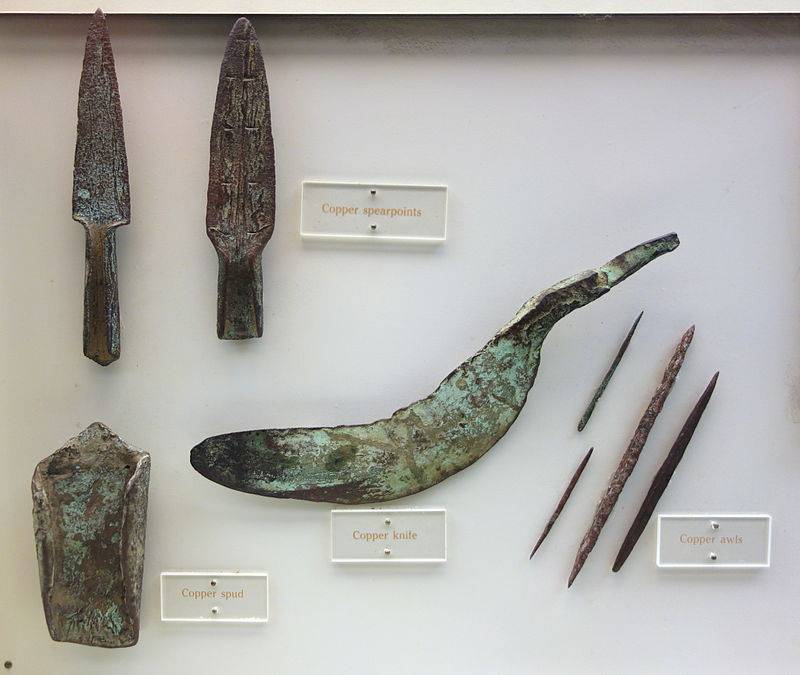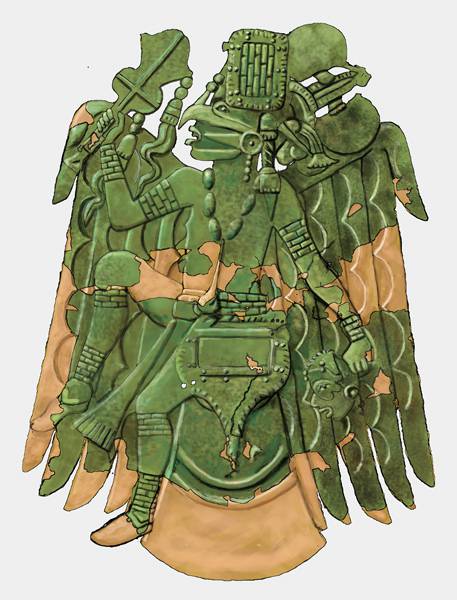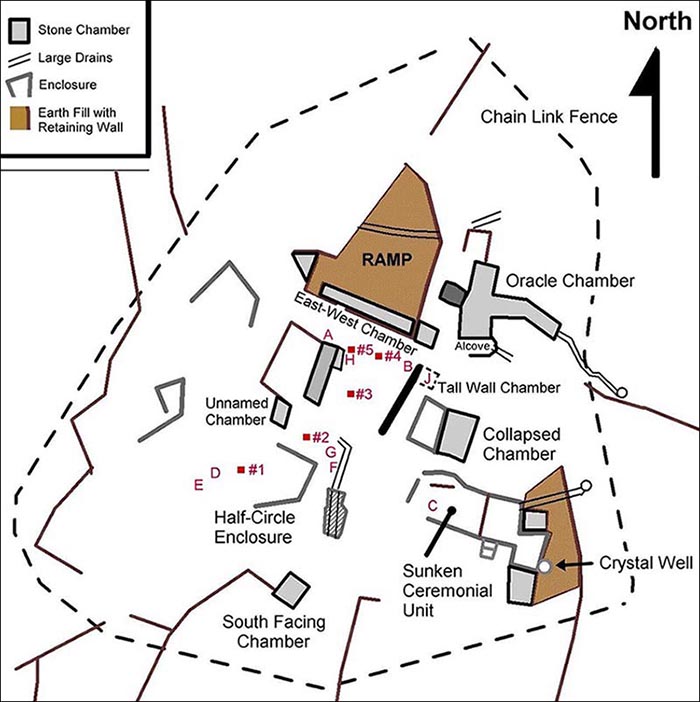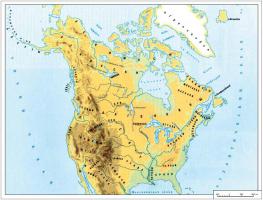Почему в Северной Америке (территории США...
 andy4675
05.12 2017
andy4675
05.12 2017
Дело не в географической принадлежности, а в культурной. И текущая тема посвящена не ВООБЩЕ цивилизациям континента Северная Америка, а конкретно факту того, что в Северной Америке (то есть у индейцев в США и Канаде) до прибытия белого человека, по мнению Алисы так и не сформировалась цивилизация.
Если бы Алиса подразумевала и Мезоамерику, то получается, что Алиса - невежда, которая не знает о цивилизациях ацтеков, майя, тольтеков, запотеков, ольмеков и их достижениях. А это, уверен - совершенно не так. Короче говоря: тема не посвящена отсутствию Мезоамериканских цивилизаций. Она посвящена отсутствию цивилизаций у индейцев в Канаде и США.
В Энциклопедии Британника существует категория "Североамериканские индейцы". Там к ней отнесены только племена, живущие на территории США и Канады (эскимосы (инуиты), шоуни, микмаки, гуроны, мохоки, делавары, ирокезы, апачи, команчи, сиу, кри, чоктау, чейены, семинолы, шошоны, могикане, кроу, чиксоу, шошоны, блакфуты, оджибва, арикара, хопи, навахо, паони, индейцы Великих Равнин):
https://www.britanni...merican-Indians
В культурном плане индейцы Северной Америки как правило отделяются от индейцев Центральной Америки и Мексики. Такая интерпретация - самая обычная:
https://www.amazon.c...n/dp/0756610818
Статья о мифологии североамериканских индейцев ("Индейцев Северной Америки мифология") в двухтомной энциклопедии "Мифы Народов Мира" и карта оттуда:
http://www.indostan....30/3412_1_o.pdf
Из той же энциклопедии - карта к статье "Индейцев Центральной Америки мифология"
Речь идёт о старой научной традиции. Североамериканские индейцы, или индейцы Северной Америки - это термин, с конкретным значением и содержанием. Когда в специальной научной литературе говорится о культурах, цивилизациях, племенах Северной Америки - всегда подразумеваются культуры, цивилизации и племена живущие в северной части континента - в Канаде и США. Если же авторы хотят поговорить о родственных между собой цивилизациях ацтеков и майя и их корнях, вкупе друг с другом, то как правило они используют термин цивилизации Мезоамерики. Цивилизации Центральной Америки и Мексики (то есть Мезоамериканские цивилизации) - ближе уровнем достижений (а отчасти и менталитетом) к Андской цивилизации, нежели к цивилизации индейцев Северной Америки.
Деление Северной Америки и Мезоамерики имеет корни как в литературе:
https://www.amazon.c...g/dp/0812216024
Так и в музейных экспозициях (например в Британском музее):
https://www.khanacad...an-introduction
В некоторых случаях по той или иной причине учёные говорят о комплексе всех культур Североамериканского континента. В таких случаях они специально оговариваются, что принимают во внимание все цивилизации континента - как североамериканские, так и мезоамериканские:
This article briefly considers early monumental constructions in North America, including Mesoamerica
http://www.tandfonli...70X.2013.794591
В некоторых случаях учёные также разделяют и саму Мезоамерику на части: южная её часть в таком случае именуется Центральной Америкой, а северная часть - Мексикой. Иногда имеет место и дальнейшая детализация - на государства (Гондурас, Гватемала, Сальвадор, Никарагуа, Коста-Рика, Панама), или провинции (например штаты Мексики) или даже на более мелкие регионы.
 andy4675
05.12 2017
andy4675
05.12 2017
Гипотезы о контактах цивилизаций Мезоамерики с племенами Северной Америки:
 Castle
05.12 2017
Castle
05.12 2017
Дискуссию о принадлежности Мезоамерики Североамериканскому континенту заканчиваем. Здесь форум не географический, а исторический, исторически это разные области, хоть и опосредованно связанные между собой. Коллега Алиса задала вполне конкретный вопрос, от него и танцуем. Тема Мезоамерики большая и важная, разбираем ее отдельно.
О металлургии индейцев Северной Америки:
https://topwar.ru/98...oy-chast-3.html
https://studopedia.org/11-22685.html
Изделия из меди из музея штата Висконсин – типичные изделия американского «медного века».

Медная пластинка, изображающая Сокола-танцовщика, найденная в Этовских курганах.

 andy4675
06.12 2017
andy4675
06.12 2017
В США также существуют термины "американские индейцы" (American Indians) и "коренные американцы" (Native Americans), для обозначения североамериканских индейских племён (то есть племён индейцев США и Канады).
Evelyn Wolfson, "Mythology of the American Indians", карта:
Martin Gilbert, "The Routledge Atlas of American History", 5th edition, 2006 год, издательство Рутледж. Карта происхождения индейцев Америки (книга посвящена истории США):
В книге "Historical Dictionary of Early North America" (серия "Historical Dictionaries of Ancient Civilizations and Historical Eras, No. 15", Cameron B. Wesson, изд. The Scarecrow Press, Inc., 2005 год) не упоминаются ни ацтеки, ни майя. Правда, упоминаются ацтекоязычные племена Северной Америки проживающие на территории США, например - хопи и шошоны, а также коротко (6 строк) говорится о культурах Месоамерики в целом. О культурах Большого Бассейна, на юго-западе США, есть такая статья, например:
GREAT BASIN CULTURE AREA. Geographic area composed of thevarious local environments that lie between the Sierra Nevada andRocky Mountains in the present-day states of Nevada, Utah, westernColorado, southeastern Oregon, southern Idaho, western Wyoming,eastern California, as well as northern Arizona. This region is characterizedby extreme variations in altitude, rainfall, temperature, andvegetation. During the late Pleistocene, it had greater rainfall andpossessed a greater density of plant and animal species. Archaeologicalevidence of Paleoindian occupation indicates that camels, wildhorses, and mammoth were common in this region. By 10,000 B.P.(8000 B.C.), local environments resembled more closely their moderncounterparts.Native American groups living in the Great Basin were generallysmall and seasonally mobile. Some groups in the southeast portion ofthe Great Basin practiced limited horticulture during the period from1000 to 600 B.P. (A.D. 1000–1350). These peoples, commonly referredto as Fremont and Virgin River Anasazi, cultivated maize, beans, andsquash, and lived in sedentary communities. However, climate changein the region forced them to adopt a more mobile lifestyle. During thehistoric period, the Great Basin was home to the Chemehuevi, Comanche,Kawaiisu, Pauites, Shoshone, Utes, Washo, and other groups.These peoples exhibited remarkable linguistic uniformity, with mostspeaking closely related dialects of the Uto-Aztecan language family.
Немного интересного о заселении Великих Равнин, и о связях местного населения с мегафауной (что в этой теме уже обсуждалось, в некоторой мере):
GREAT PLAINS CULTURE AREA. A largely treeless grassland extendingfrom the Mississippi River valley west to the Rocky Moun-tains, and south from present-day Manitoba, Saskatchewan, and Albertato central Texas. The earliest evidence of human occupation ofthe Great Plains are Paleoindian sites (circa 12,000 B.P. [10,000B.C.]) related to big-game hunting. By about 7500 B.P. (5500 B.C.),regional cultural adaptations demonstrate a reduced reliance uponmegafauna (primarily bison) and an increase in foraging activities.Between 2500 and 350 B.P. (500 B.C.–A.D. 1600), marked differencesin subsistence regimes between eastern and western Plainsgroups develop, with eastern Plains groups adopting sedentary, villageagriculture. Eastern Plains peoples began to construct fortifiedvillages and semisubterranean earthlodges. These eastern agriculturalgroups are considered ancestral to the modern Arikara, Hidatsa,Mandan, Pawnee, Wichita, and other groups. Western Plainsgroups continued as mobile foragers, and with the introduction of thehorse they became focused on bison hunting as their primary subsistenceactivity. These groups became increasingly mobile, with thetipi serving as their primary domestic structure. These nomadicgroups of the western Plains are considered ancestral to the modernBlackfoot, Crow, Cheyenne, Comanche, Sioux (Dakota), and othergroups. Other well-known Great Plains peoples include the Comanche,Kiowa, Sioux, Pawnee, and Blackfoot.Many contemporary stereotypes of Native Americans are drawnfrom the cultural practices of Great Plains peoples, including tipis,feathered headdresses, and the Plains horse culture. However, manyof these practices were not long-standing regional cultural traditions,but were brought about as a result of both direct and indirect contactwith Europeans.
Юто-ацтекская языковая семья:
UTO-AZTECAN LANGUAGE FAMILY. Family of more than 30 individualNative American languages spoken by groups in the GreatBasin, Southwest, and Mesoamerica. Uto-Aztecan languages inNorth America include Ute, Hopi, Shoshone, Nahuatl, and others.Uto-Aztecan is traditionally divided into northern and southernbranches. The northern branch was spoken from present-day Idaho andOregon to southern California and Arizona, and includes Comanche,Hopi, Northern and Southern Paiute, Ute, and Northern and EasternShoshone. The southern branch was spoken in present-day Arizona andNew Mexico, into northern and central Mexico, and includes Pima,Papago, Tarahumara, Yaqui, Cora, Huichol, and Nahuatl.
О шошонах:
SHOSHONE INDIANS. Uto-Aztecan–speaking groups of the GreatBasin, including portions of present-day Idaho, Nevada, Oregon,Utah, and Wyoming. The Shoshone are divided into Northern andSouthern (also referred to as Western Shoshone) divisions, with thesecultural divisions exacerbated by the introduction of the horse byEuropeans. Although both groups were foragers, the NorthernShoshone became highly mobile bison hunters and adopted culturalpractices of many Great Plains groups after the introduction of thehorse. The Southern Shoshone, however, remained small groups ofmobile foragers well into the historic period. At present there aremore than 10,000 Shoshone in Nevada, Utah, and Wyoming.
О хопи:
HOPI INDIANS. Uto-Aztecan–speaking western Puebloan peoplesof the American Southwest. Considered to be descendants of the prehistoricAnasazi, the Hopi occupy a series of pueblo settlements onmesas in northern Arizona. The oldest of these settlements is a Hopivillage named Oraibi, which has been occupied since 800 B.P. (1150A.D.). The Hopi are sedentary agriculturalists, growing maize,beans, squash, melons, and cotton. They are also pastoralists with alarge number of sheep. The Hopi are a matrilineal society, with astrong matriclan structure. Hopi religious life centers on the secretpractices of individual kivas, with their most important rituals includingthe use of elaborate masks and costumes for the impersonationof kachina spirits. The Hopi continue to be recognized as outstandingweavers, potters, and artists. At present, more than 6,000Hopi reside in Arizona and New Mexico.
О языках индейцев:
LANGUAGES. At the time of first contact with Europeans, NativeAmerican peoples of North, Central, and South America spoke morethan 1,000 distinct languages. These individual languages belong tomore than 100 unique language families, with the major groups consistingof Aleut–Eskimo, Algonquian, Athabaskan, Caddoan, Iroquoian,Muskogean, Penutian, Salishan, and Uto-Aztecan. One ofthe major cultural impacts of European colonialism was the declinein indigenous population and the concomitant extinction of manyNative American languages. This process of language loss was exacerbatedduring the 19th century with the U.S. and Canadian governmentsadopting educational policies that were designed to eliminatenative languages. Despite these earlier efforts, more than 300 languagescontinue to be spoken by Native American peoples of NorthAmerica. Ongoing efforts designed to preserve Native American languagesare underway, with many focused on teaching Native Americanyouths their group’s traditional language.
Первый погребальный курган в Северной Америке:
L’ANSE AMOUR. Archaeological site in southern Labrador, Canada,with evidence of the earliest presently known burial mound in NorthAmerica, dated to 7500 B.P. (5500 B.C.). Excavated by James Tuck,the L’Anse Amour site is associated with the Maritime Archaic tradition,and consists of a low, circular pile of rocks covering a child’sgrave. At the time of the interment, the body was covered with ocherand wrapped in skins, and a variety of grave goods were placed inthe burial pit.
Викингское поселение в Ньюфаундленде:
L’ANSE AUX MEADOWS. Archaeological site located on the northerntip of Newfoundland with evidence of a Norse (Viking) occupationduring the late 10th century. Believed to be related to the Vinlandcolonization efforts of Leif Ericsson, archaeological excavations atL’Anse aux Meadows by Helge Ingstad and Anne Stine Ingstad confirmedthe Norse presence more than five centuries before the expeditionof Christopher Columbus. Although occupied for only a fewyears, this settlement did result in the earliest recorded substantiatedcontacts between Europeans and Native Americans (whom the Norsereferred to as Skraelings).
Индейцы группы паюте:
PAIUTE INDIANS. Numic-speaking (Uto-Aztecan language family)Native American groups who occupied portions of Utah, Arizona,Nevada, Oregon, and California. Traditionally divided into northernand southern branches, both groups were primarily migratory foragerswho subsisted on wild plant foods and small game. The NorthernPaiute also participated in seasonal bison hunts and were moreheavily influenced by groups from the Great Plains. After the introductionof the horse, the Northern Paiute became increasingly mobile,constructing tipis and following migratory bison herds. TheSouthern Paiute constructed temporary brush shelters called wickiups,used rabbit-skin clothing, and made woven baskets. Bothgroups were very loosely organized in terms of sociopolitical organization.The Paiutes were dramatically impacted by European contactsduring the 19th and 20th centuries, especially during the Mormonmigration into Utah in the 1850s and 1860s. As a result of theincreasing European presence, the Paiutes experienced a reduction intheir territory, with most forced to abandon traditional foraging practices.At present there are more than 8,000 Paiutes in the westernUnited States, with many residing on the Paiute reservation in southwesternUtah.
Индейцы папаго:
PAPAGO INDIANS. Uto-Aztecan–speaking peoples of the desert regionof southern Arizona and northern Sonora, Mexico. Closely relatedculturally and linguistically to the Pima, both groups are thought to bethe historic descendants of the Hohokam. The Papago were semisedentaryagriculturalists who occupied a series of small, dispersedvillages along the San Pedro, Santa Cruz, and Altar Rivers. They practicedirrigation agriculture, cultivating maize, beans, cotton, and thegiant saguaro cactus. The Papago also collected salt from small desertlagoons and traded it to other groups. The Papago had little contactwith Europeans until the late 17th century, allowing them to retainmuch of their traditional culture. In 1848 the United States gainedcontrol of Arizona, with the newly established Mexican border traversingPapago lands. Most of the Papago moved to the United Statesin the late 19th century; however, some groups remained in Mexico. Atpresent, there are approximately 7,500 Papago on reservations insouthern Arizona.
PIMA INDIANS. Uto-Aztecan–speaking Native American groups ofthe desert region of southern Arizona. Closely related culturally andlinguistically to the Papago, both groups are thought to be the historicdescendants of the Hohokam. The Pima were semisedentaryagriculturalists who occupied a series of villages along the Gila andSalt Rivers. They practiced extensive irrigation agriculture, cultivatingmaize, beans, cotton, and the giant saguaro cactus. Giventheir larger, more populous villages, the Pima maintained a greatersense of group identity than did the geographically dispersed Papago.The Pima have a history of animosity with the Apache, who are saidto have raided their settlements during the 16th and 17th centuries.The discovery of gold in California in 1849 brought increasing numbersof American settlers and prospectors onto Pima lands, eventuallypushing them away from their most fertile territories and watersources. The Pima were eventually granted three small reservationsin southern Arizona, where at present more than 10,000 Pima reside.
Индейцы якуй:
YAQUI INDIANS. Uto-Aztecan–speaking Native American groups ofthe Southwest who occupied territory stretching from the SonoranDesert to the Pacific Coast of Mexico, including extreme southernArizona. The Yaqui were village agriculturalists who actively resistedSpanish colonization during the 16th and 17th centuries. Duringthe 19th century, they fought against Mexican encroachments ontheir lands, with most of their land seized by Mexicans in the 1880s.After this confiscation, many Yaqui migrated across the border intoArizona, creating new settlements near Tucson and Phoenix, Arizona.In the 1930s many returned to Mexico when much of their land wasreturned, while others remained on the Pascua Yaqui reservationsouth of Tucson. At present, there are approximately 40,000 Yaqui inArizona and Sonora, Mexico.
Палеоиндейцы:
PALEOINDIAN. The earliest prehistoric human cultures of the Americas.Presently dated from approximately 13,000–9000 B.P.(11,000–7000 B.C.), Paleoindian cultures are distinguished by a seriesof lithic tools and fluted projectile points, including Clovis,Folsom, and others. Prevailing views suggest that Paleoindian peopleslived in small hunting bands that entered North America fromeastern Siberia via the Bering Land Bridge.
Хронология:
Chronology13,000+ B.P. (11,000 B.C.) Most widely accepted date for the initialarrival of Paleoindians from Asia via the Bering Land Bridge; Clovisand other early big-game hunting cultures.
10,000 B.P. (8000 B.C.) Extinction of most species of megafauna inNorth America.
В аналогичных тонах описывает североамериканские культуры энциклопедия Encyclopedia of Prehistory, Volume 6: North America, Edited by Peter N. Peregrine and Melvin Ember, 2001 год издания, издательство Springer Science+Business Media.
Регионы североамериканских индейских культур (книга "Native American", Paula Hartz, 3rd edition, 2009 год):
"Американская Археология: открывая викингов", Лоис Майнер Хуэй, издательство Маршалл Кавендиш, 2010 год (на английском языке) изображает местонахождение Л'Анс О Медоу на Ньюфаундленде, где найдены следы пребывания викингов:
 andy4675
06.12 2017
andy4675
06.12 2017
Как раз в тему которую тут подняла Алиса - книга "Вклад американских индейцев в мировую культуру":
"American Indian Contributions
to the World
15,000 YEARS OF INVENTIONS AND INNOVATIONS"
авторы - EMORY DEAN KEOKE и KAY MARIE PORTERFIELD
издательство - Checkmark Books, 2003 год издания
Например:
Письменная память индейцев (включая североамериканских):
American history, recorded (ca. 31 B.C.)
Mesoamerican; South American Andean; North American Paleo-
Indian, Great Plains, and Northeast cultures
History is a written record of the events that have taken place
in a culture. Although knowledge of these events was primarily
preserved within an oral tradition in the Americas before European
conquest, indigenous people in North, Meso-, and
South America also recorded them. These historical records
ranged from petroglyphs carved onto rocks by Paleo-Indians
throughout the Americas to the sophisticated BOOKS created in
about A.D. 600 by the Maya culture that began its rise in
Mesoamerica starting in about 1500 B.C. and later the Aztec,
whose empire was established in about A.D. 1100. The oldest
writing (see also WRITING SYSTEMS) that has been found in
Mesoamerica is a bar-and-dot date, 31 B.C., that was carved
onto a stele, an upright stone slab used as a monument, by the
Olmec. The Olmec inhabited Mesoamerica from 1700 B.C. to
400 B.C.
The Moche, who lived on the northern coast of what is
now Peru from 200 B.C. to A.D. 600, preserved their historic
record in detailed POTTERY that is painted with realistic scenes
of everyday life as well as diplomatic gatherings. Later the Inca,
whose empire was established in about A.D. 1000 in the same
area, used the QUIPU, a knotted-string device that served to
record accounts as well as other information.
In North America, Eastern Woodlands cultures used
WAMPUM belts, or sashes made from shells, to commemorate
important historical events. Indians of the northern
plains had a profound sense of history as well, painting
records of their past onto buffalo hides. These were called
winter counts because they were made in the winter when
people had more time to spend on such projects than in summer
when hunting, gathering, and food preservation were of
primary importance. Each winter marked one year that had
passed. These winter counts were meant as mnemonic devices,
or memory aids, so the pictures that composed them
were not detailed. The events they portrayed included good
and poor hunting years, disputes both inside and outside of
the tribe, the deaths of leaders, and unusual natural events.
Usually the counts were recorded and kept by elders who
were entrusted to pass their knowledge of history on to future
generations. When the hides wore out, the counts were
copied onto new hides.
After the arrival of Europeans, American Indian historians
began using paper for winter counts, drawing pictures with
pens, pencil, and watercolor. Ledger books used by military
storekeepers and traders became highly prized for recording
tribal and personal history.
See also ALMANACS; CALENDARS.
Sources/Further Reading
American Treasures of the Library of Congress: Memory. “The
Winter Count.” URL: http://www.loc.gov/exhibits/treasures/
trm054.html. Downloaded on March 29, 1999.
Catherine, Janet. “Plains Indian Drawings 1865–1935.” The
Drawing Center. URL: http://www.artseensoho.com/
Art/DRAWINGCENTER/plains96/plain sintro.html.
Downloaded on March 29, 1999.
Hassrick, Royal B. The Sioux: Life and Customs of a Warrior
Society. Norman: University of Oklahoma Press, 1964.
О вызывании анестезии индейцами Северной Америки:
anesthetics (ca. 1000 B.C.) Mesoamerican, South
American Andean, North American Northeast cultures
Anesthetics are substances that cause partial or total loss of
sensation or loss of consciousness. They were used by pre-
Columbian physicians in the Americas for a number of medical
problems, such as bone fractures, gout, rheumatism, and
neuralgia. American Indians also used anesthetics for
SURGERY, including brain surgery (see also TREPHINATION)
as early as 1000 B.C. COCA, PEYOTE, and datura (see also
ARTHRITIS TREATMENTS) are three of the many anesthetics
American Indians used to numb feelings of pain.
Coca (Erythroxylon coca), or cocaine as it is known today,
was used both as an external and an internal anesthetic by
Inca physicians who understood the drug’s anesthetic property.
The Inca culture arose about A.D. 1000 in what is now
Peru. When they used coca externally, they prepared it as a
poultice and applied it to the painful areas of the patient’s
body. Inca physicians also had their patients ingest coca before
any surgery. Not until Carl Kohller’s 1884 experiments
in Germany did the non-Indian world discover cocaine’s
anesthetic properties. Soon after the modern medical community
stumbled upon cocaine’s ability to suppress sensation,
the plant-derived drug became popular among
physicians.
The Aztec, who established an empire in Mesoamerica
and what is now Mexico in about A.D. 1100, employed peyote
(Lophophora williamsii) as an anesthetic for many years
before contact with Europeans. Aztec physicians used a lotion
made from the root of the plant for health problems
such as sore feet and headaches. Taken internally, a decoction
of peyote served as a fever reducer. Indians of southern Arizona
and northern Mexico used peyote to dull the pain of
large open wounds, snakebites, and fractures. They ground
the root of the peyote plant, prepared it as a poultice, and applied
it to the injured area. Peyote’s anesthetic properties
were so effective that in the 1800s U.S. Army surgeons used
the plant as a painkiller as well.
Indians living in the area of what is now Virginia used
“Jamestown weed” (Datura stramonium L.), or jimson weed,
as it was later called. Like coca and peyote, this plant was
used both externally and internally. Indian healers ground
the root to form a plaster that was applied to wounds,
bruises, and cuts. They had their patients take the plant internally
as an anesthetic prior to setting broken bones and
fractures as well as for general debility and paralysis. After
contact with American Indians, colonial doctors adopted
jimsonweed as an anesthetic.
Prior to the mid-1800s, non-Indian doctors who performed
surgery did not have effective anesthetics. As a result,
surgery was often both a last resort and a barbaric practice.
Some physicians resorted to knocking patients out by hitting
them in the jaw. Before 1847 and the discovery of ether, alcohol
and opium were the most reliable ways non-Indian
physicians had to numb their patients’ pain. The high
dosages of alcohol or opium required to kill pain sometimes
killed the patients.
See also MEDICINE; PHARMACOLOGY.
Sources/Further Reading
Mason, J. Alden. The Ancient Civilizations of Peru. Rev. ed.
New York: Penguin Books, 1988.
Ortiz de Montellano, Bernard. Aztec Medicine, Health, and
Nutrition. New Brunswick, N.J.: Rutgers University
Press, 1990.
Peredo, Miguel Guizman. Medical Practice in Ancient America.
Mexico City: Ediciones Euroamericanas, 1985.
Sullivan, John T. “Surgery before Anesthesia.” Neurosurgery
Home Page. URL:http://neurosurgery.mgh.harvard.edu/
History/beforeth.htm. Downloaded on July 27, 1999.
Vogel, Virgil. American Indian Medicine. Norman: University
of Oklahoma Press, 1977.
Weatherford, Jack. Indian Givers: How the Indians of the
Americas Transformed the World. New York: Fawcett
Columbine, 1988.
Одомашнивание животных индейцами, включая североамериканских:
animals, domesticated (ca. 13,000 B.C.–10,000 B.C.)
North American, Mesoamerican, South American Andean
cultures
Animals are considered to have been domesticated when they
are kept for clear purposes, the traits that they exhibit in the
wild have been modified, their breeding is controlled, and
their survival depends on the humans who keep them. Animal
domestication is more complex than simply taming them; it
necessitates selecting types of animals that have the temperament
to remain close to humans and those that will provide
benefit to humans. Indians began to domesticate animals in
the Americas from 15,000 to 12,000 years ago. These animals
included DOGS, GUINEA PIGS, TURKEYS, LLAMAS, ALPACAS,
and VICUNAS. The Muscovy duck (see also DUCKS, MUSCOVY),
PARROTS, and bees (see BEEKEEPING) were also domesticated.
Throughout the Americas, the domestication of animals
was far surpassed by agriculture or plant domestication. One
reason for this was the lack of native animals suitable for draft
purposes such as pulling plows or carts. (Although paleontologists
believe a horse evolved in the Americas, it became extinct
long before humans began domesticating animals.) The BISON,
or buffalo, that ranged throughout North America had an extremely
strong herd instinct and were unlikely beasts of burden
or draft animals. Llamas, which were domesticated in
South America, were more suitable for pack animals than for
draft purposes.
Sources/Further Reading
Driver, Harold E. Indians of North America. Chicago: University
of Chicago Press, 1969.
Farb, Peter. Man’s Rise to Civilization as Shown by the Indians
of North America from Primeval Times to the Coming of the
Industrial State. New York: E. P. Dutton & Company,
1968.
Weatherford, Jack. Indian Givers: How the Indians of the Americas
Transformed the World. New York: Fawcett Columbine,
1988.
И так далее...
 stan4420
06.12 2017
stan4420
06.12 2017
книга "Вклад американских индейцев в мировую культуру" "American Indian Contributions to the World 15,000 YEARS OF INVENTIONS AND INNOVATIONS"
я так понял - на русском книга не выходила?
 andy4675
07.12 2017
andy4675
07.12 2017
Но в ней описываются достижения всех индейцев - североамериканских, мезоамериканских и южноамериканских.
 rakovsky
18.12 2023
rakovsky
18.12 2023
Ну, не совсем же ничего не было. Вот некоторые известные цивилизации индейцев Северной Америки:
1. цивилизация Миссиссиппи (800 - 1.500 г. г.; депопуляция городов началась ок. 1.450 г.). Эта популяция традиционно считается самой великой в Северной Америке и ее связывают с цивилизациями Центральной Америки.
http://en.wikipedia....sippian_culture
http://mad4science.w...mound-builders/
http://mad4science.f.../01/cahokia.gif
http://mad4science.f...ppian-mound.jpg
2. лига пяти наций ирокезов (сформировалась где-то после 1.000 г.; в результате войн французов и англичан, в которых они, как правило, выступали на стороне последних, это сильнейшее племя Северной Америки, длительное время терроризировавшее всех своих индейских и европейских соседей, оказалось на грани исчезновения, и ныне далеко не столь многочисленно, как некогда)
http://en.wikipedia.org/wiki/Iroquois
3. культура анасази (пуэбло) (с 12 в. до н. э., особенно примерно с 700 г. н. э. условно по 1.500 г.)
http://ru.wikipedia.org/wiki/Анасази
А еще в связи с известиями викингов о их поселении в Винланде, стараются найти их поселения в Северной Америке. Следы викингов, вроде, нашли. Но поселений, пока, вроде не нашли.
По-моему, только аборигены Австралии не создали цивилизации до самого открытия континента. Так и оставались первобытными, до тех пор.
Andy,
Кроме тех трех индейских культур, есть еще мегалитская культра в Нью Ингланд, строениями Stonehenge USA / Mystery Hill, Gungywamp, Upton Chamber и тому подобное.
Карта Stonehenge USA здесь:

Одно из поселений викингов нашли на северном полуострове Newfoundland в Канаде, называется L'anse aux Meadows.
Скажите пожалуйста, в Южно Африканской Республике нашлись солидные доколониальные сооружения?
Я поискал в интернете кратко, но нашел только вроде старые заборы.
 Ололо
19.12 2023
Ололо
19.12 2023
Ну, не совсем же ничего не было. Вот некоторые известные цивилизации индейцев Северной Америки:
1. цивилизация Миссиссиппи (800 - 1.500 г. г.; депопуляция городов началась ок. 1.450 г.). Эта популяция традиционно считается самой великой в Северной Америке и ее связывают с цивилизациями Центральной Америки.
http://en.wikipedia....sippian_culture
http://mad4science.w...mound-builders/
http://mad4science.f.../01/cahokia.gif
http://mad4science.f...ppian-mound.jpg
2. лига пяти наций ирокезов (сформировалась где-то после 1.000 г.; в результате войн французов и англичан, в которых они, как правило, выступали на стороне последних, это сильнейшее племя Северной Америки, длительное время терроризировавшее всех своих индейских и европейских соседей, оказалось на грани исчезновения, и ныне далеко не столь многочисленно, как некогда)
http://en.wikipedia.org/wiki/Iroquois
3. культура анасази (пуэбло) (с 12 в. до н. э., особенно примерно с 700 г. н. э. условно по 1.500 г.)
http://ru.wikipedia.org/wiki/Анасази
А еще в связи с известиями викингов о их поселении в Винланде, стараются найти их поселения в Северной Америке. Следы викингов, вроде, нашли. Но поселений, пока, вроде не нашли.
По-моему, только аборигены Австралии не создали цивилизации до самого открытия континента. Так и оставались первобытными, до тех пор.Andy,
Кроме тех трех индейских культур, есть еще мегалитская культра в Нью Ингланд, строениями Stonehenge USA / Mystery Hill, Gungywamp, Upton Chamber и тому подобное.
Карта Stonehenge USA здесь:
Одно из поселений викингов нашли на северном полуострове Newfoundland в Канаде, называется L'anse aux Meadows.
Скажите пожалуйста, в Южно Африканской Республике нашлись солидные доколониальные сооружения?
Я поискал в интернете кратко, но нашел только вроде старые заборы.
Там вроде малая раса, не негроидная.
И анди забанен вроде. Навсегда. Хотя и заходит почитать.








